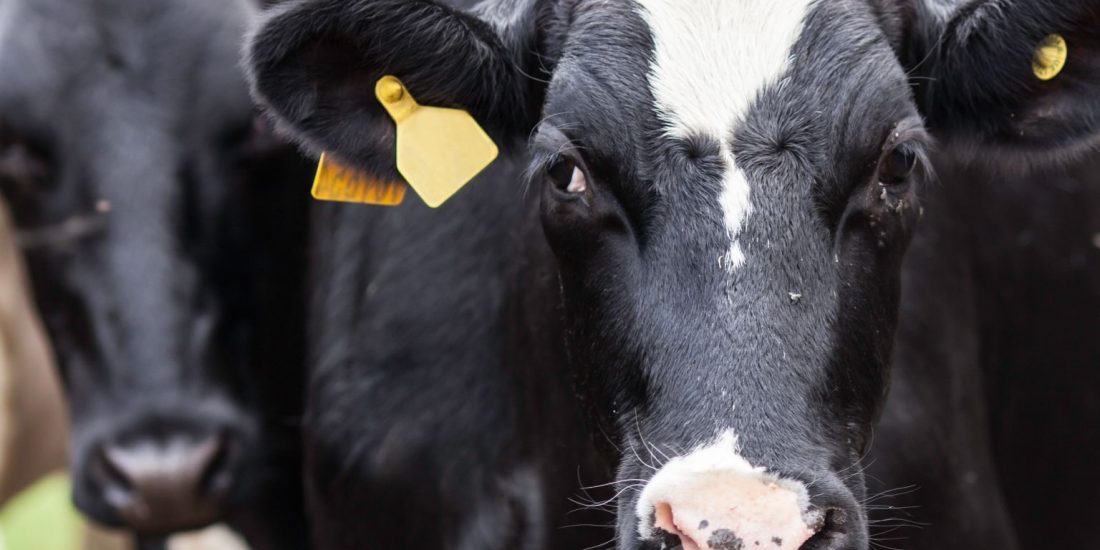Article: Dairy Farmers Union should use their common sense
That is neither in the interest of dairy farming nor the reputation of the agricultural sector. It can even damage the societal debate about the future of livestock production. The Nicolaas G. Pierson Foundation has worked for a year to bring together scientific research conducted by the Profetas project, the Free University, the Food and Agricultural organisation, the World Watch Institute and countless others and to translate these findings into a film that is accessible to the general public.
In the film, researchers from the aforementioned institutions are given the opportunity to have their say, so that there can be no doubt that their research has been represented correctly. Their conclusions are clear: the livestock sector is responsible for 18% of greenhouse gas emissions worldwide, while all the cars, lorries, ships and planes added together do not account for more than 13% of greenhouse gas emissions.
The NMV’s oversimplified accusation that the facts and figures have been manipulated, or even that lies have been told, requires serious underpinning. Although the NMV contends that they are supported by the statistics from researchers at Wageningen University, these researchers themselves say that they cannot provide any foundation for the NMV’s conclusions. The reason is that their claims are based on incomplete calculations and incorrect comparisons. It is as if the NMV has done nothing other than to pull up a smoke curtain of figures that have not been validated. Indeed, they try to pluck grass and hay out of research reports with a completely different approach in a way that even one of the researchers describes as “comparing apples with pears”.
In sum the NMV’s reasoning boils down to the following: grassland and maize crops absorb CO2, cows eat grass and maize and so what we are, therefore, dealing with is a “closed cycle”. As great as it would be if this were true, the reality is unfortunately rather different.
For each kilo of milk that a cow yields, the animal will also produce an equivalent of 1.4 kg CO2. This is primarily from the greenhouse gasses methane and nitrous oxide. These emissions make a massive contribution to the greenhouse effect, particularly because methane is 21 times more potent than CO2 and nitrous oxide at least 310 times stronger. The Centre for Agriculture and Environment (CLM) has even calculated that a cow produces just as many greenhouse gas emissions annually as a car that drives 70,000 km. The methane, which is emitted through the fermentation process in the gut (i.e. through belching and farting), cannot be taken up by trees and plants because the compound (CH4) is too complex. It takes between 10 to 12 years for methane to degrade and to convert into CO2, which can be ‘captured’ by plants.
The NMV has failed to take this complex chemical cycle into account. Nor has it considered the impact of emissions of greenhouse gasses from the use of concentrated feeds, artificial fertilisers, machines and refrigeration. Moreover, the NMV includes the uptake of CO2 in grass and maize crops in its calculations, while scientists have deemed this short cycle to be hardly relevant. Consequently, the short plant cycle of annual plants or crops is frequently omitted in research into greenhouse gas emissions.
When the CO2 bond from grass is subtracted from the CO2 equivalent emissions in dairy farming, then this sector is still responsible for a share of 54% of all greenhouse gas emissions in the agricultural sector. This figure is stated by National Institute for Public Health and the Environment (RIVM), which can, at the very least, be considered a reliable source. Each year, the Dutch livestock farming sector emits 8 megatons of methane and 8 megatons of nitrous oxide. The cabinet has set a goal of reducing such emissions in the coming year by half. That is quite a task.
If the dairy farmers no longer deny the truth, but dare to confront it, they can work together with other social partners to achieve a more climate friendly form of operational management. For example, by using less artificial fertiliser, less concentrated feed, producing their own energy supply and, in particular, working towards producing quality products that generate a fair price. The Netherlands cannot continue wanting to be the dairyman of Europe producing just marginal bulk products. Dairy farmers should use their agricultural expertise to produce less and better. Milk should at least have the same price tag as a chic bottle of mineral water. There should be cheese that is produced in an environmentally and animal-friendly way for which a good price is paid.
Animal produce should no longer be offered at the lowest price as a mass export good. The market for regional quality products is growing considerably. It offers opportunities for farmers to receive an honest income from sustainable, animal-friendly products. In this sense, farmers should support the new calls for a qualitatively better form of agricultural production from which family businesses can earn a decent living.
If anyone should be criticised for the problems with which the agricultural sector is confronted and which sometimes leads individual farming families to despair, then it should be those responsible for the current agricultural policy. Throughout the past few decades, a livestock industry has evolved, which not only confronts us, but also future generations with the excesses of ecological, social and animal welfare policy. The architects of factory farming and the large-scale livestock industry can be blamed for the problems of the agricultural family businesses. Meat the Truth clearly shows that things can be very different.
Ir. Natasja Oerlemans, scientific staff member, Nicolaas G. Pierson Foundation
Drs. Karen Soeters, director, Nicolaas G. Pierson Foundation and project manager for Meat the Truth


